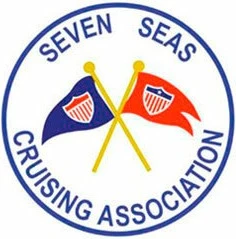Editor's Note: You may be wondering why this story's headline "THE ANSWER IS #1" It is the answer to our 2021 news quiz series titled "Deeper Diver News Trivia Quiz." This quiz is drawn from the newsletter each week. If you'd like to participate then click here to subscribe to our newsletter.
Last time, we talked about power (watts) and distance (height.) You want to have a lot of both, especially if you are the one sending the may-day. But as the song goes, “Is that all there is?” As always, no. This article is about that.
Give Me Gain!
If you’ve ever bought an antenna, it notes how many “dB’s”(decibels) of “gain” it has. This is a very important element in selecting an antenna. Without a good antenna, your radio isn’t much better than a paper-weight. Gain, for the private boater, comes usually in 3 “sizes” – 3dBs, 6dBs and 9dBs. But what is it?
Gain is simply the measure of how focused the antenna is in taking the signal from the radio and, at a given wattage, shaping the rifle bullet of energy that it sends to the horizon. The higher the dBs, the more focused the beam of energy – the sharper the “rifle bullet” rather than the “buck-shot” of a shotgun. And greater focus, going back to the last column on radios, leads to greater distance and greater effective power, meaning more of the wattage gets turned into distance over the water, as you send out your may-day.
Let’s go back to the fire-arm analogy. If you’ve ever gone hunting, you know you hunt for birds with a shotgun. Why? Because the birds are all over the sky and if you have to hit one bird with one bullet, you had better be a pretty darn good rifleman. But that “spread” of buck-shot comes at a cost – power/distance. It will take down a duck – but not a roe buck. For the power to take down a deer, you need to penetrate a highly muscled animal of several hundred pounds and hit a vital place. For that, you need focused power – a rifle. Oddly, radio gain is just like that.
All The Power Has To Go Somewhere!
Let’s think mathematically for a moment. 10 x 10 = 100, as does 50 x 2. If that were real estate, no one would want a living room that was 50 x 2, even if it was the same size in square feet as someone whose living room was 10 x 10. But gain is all about that. High gain creates a focused beam – like the 50 x 2 living room. Lower gain creates the wider footprint – 10 x 10 living room. All the power coming out of the radio has to go somewhere (we’ll leave “minor lobes” for the radio-philes for another day) and that is why, in this example, both examples result in 100. If 50 is the distance, that is better than 10, for sure. Unless, like a shotgun, you need spread. Then 10 is better than 2.
For example, when the boat is rocking as the boat rises to the crest of a wave, a high gain (50 x 2) antenna is going to send that radio beam into outer space as if it were shot out of a rifle. And when the boat is on the way down the wave, it is firing the radio beam into the back of the wave ahead of it. In this scenario, high gain works against you since the boat has to be just at the crest of the wave, essentially parallel to sea-level, for that radio beam to shoot out straight ahead and hopefully hit something – like a USCG radio tower or another boat’s antenna.
Now, if the gain were lower, instead of a rifle shot, you are getting a spread. Even when the boat is pointing into outer space, some part of that radio beam is being “shotgunned” straight across the wave tops. In the simplistic but illustrative example above, it is only going 10 units of distance over the water – instead of 50. But, even when the boat is plowing down the wave into the trough, some of that signal is getting out, rather than being beamed into the back of the wave ahead, since the gain (rifle v shotgun) is lower.
So, what to choose? Most skippers go with 6dB as that is the mid-point between distance (9dB) and spread (3dB). For those skippers with enough real estate and “moola”, two radios and two antennas gives them the optimum result. They use a 3-dB (or 6-dB) for the inside (lower) helm where they drive the boat in heavy weather and 9-dB for the upper or outside helm when the seas are flat.
Lastly, where should you put the radio itself? As far from your compass as possible. Why? The speaker has a big magnet in it. If the compass “sees” that, it will point to it and think it is the North Pole (magnetic.) In any event, once you have installed your radio, develop a “deviation table” for your boat’s compass so you know how to adjust for readings underway.
What’s a deviation table and how do you create one? That’s a lesson for another day.
If you are interested in being part of USCG Forces or have any questions regarding this article please email me at [email protected] or go direct to the D1SR Human Resources department, who are in charge of new members matters, at DSO-HR and we will help you “get in this thing.”











